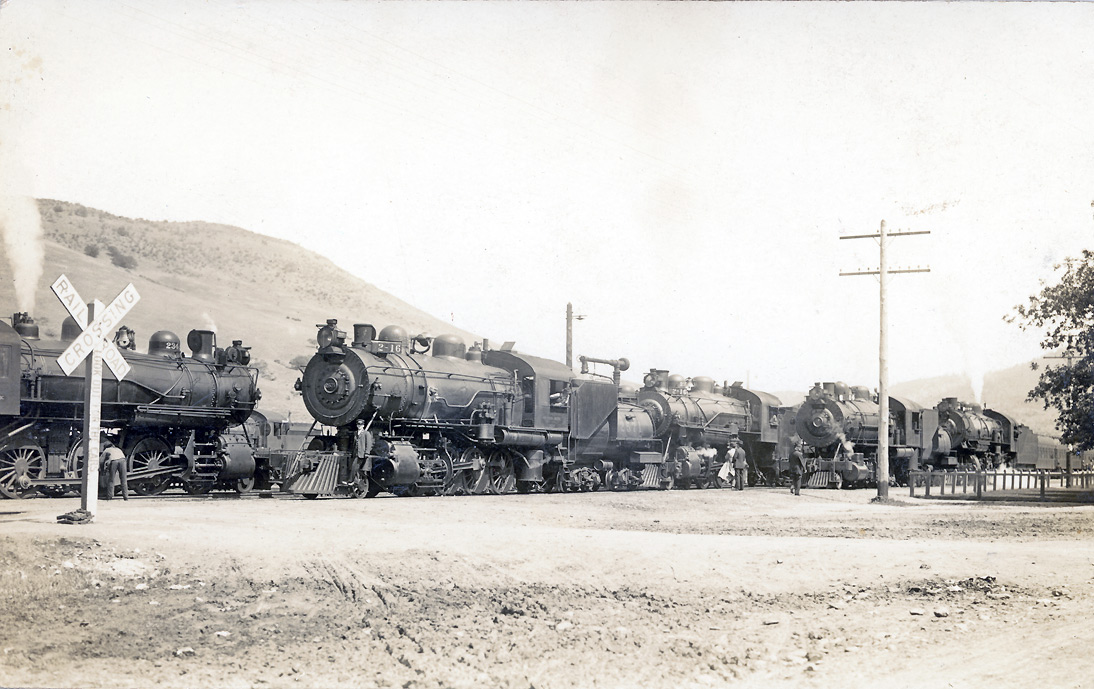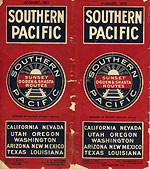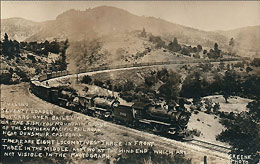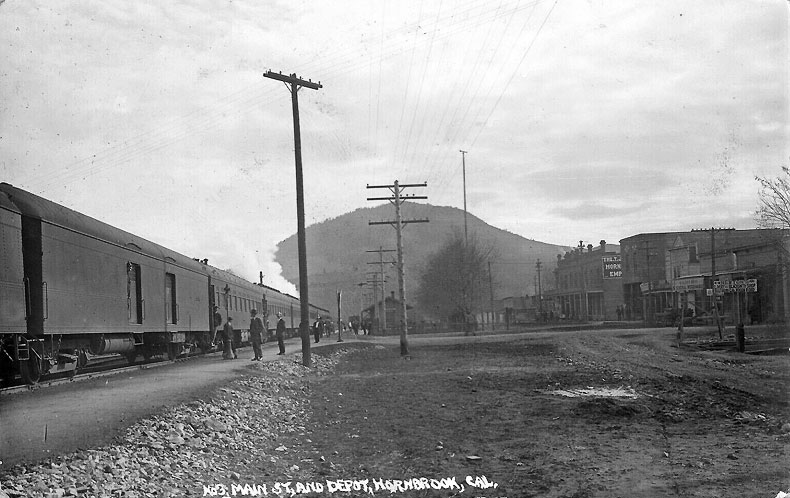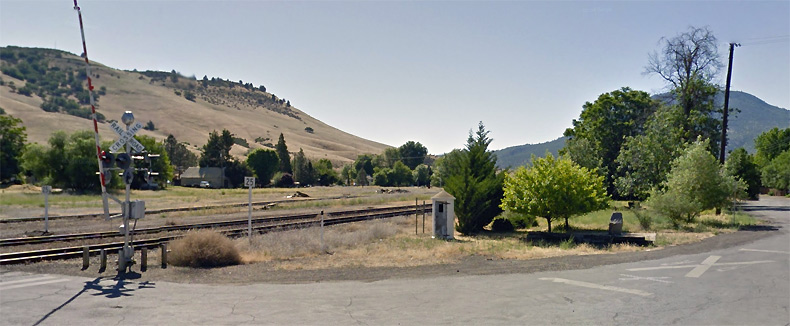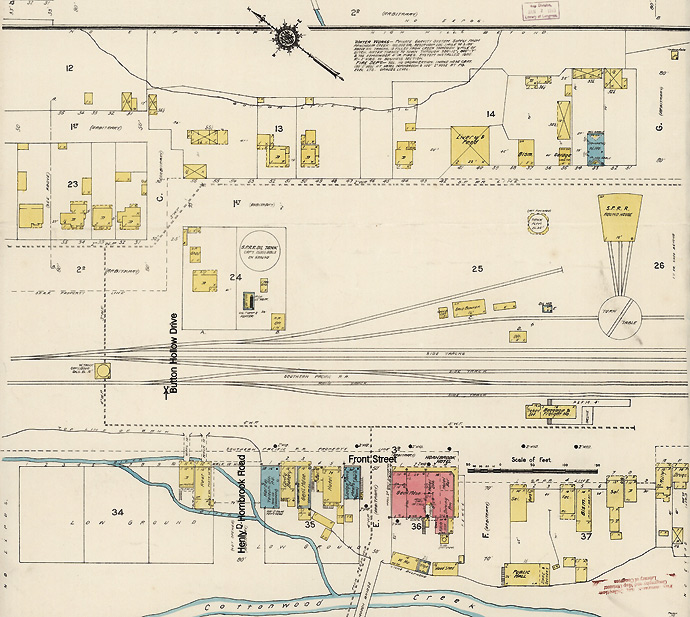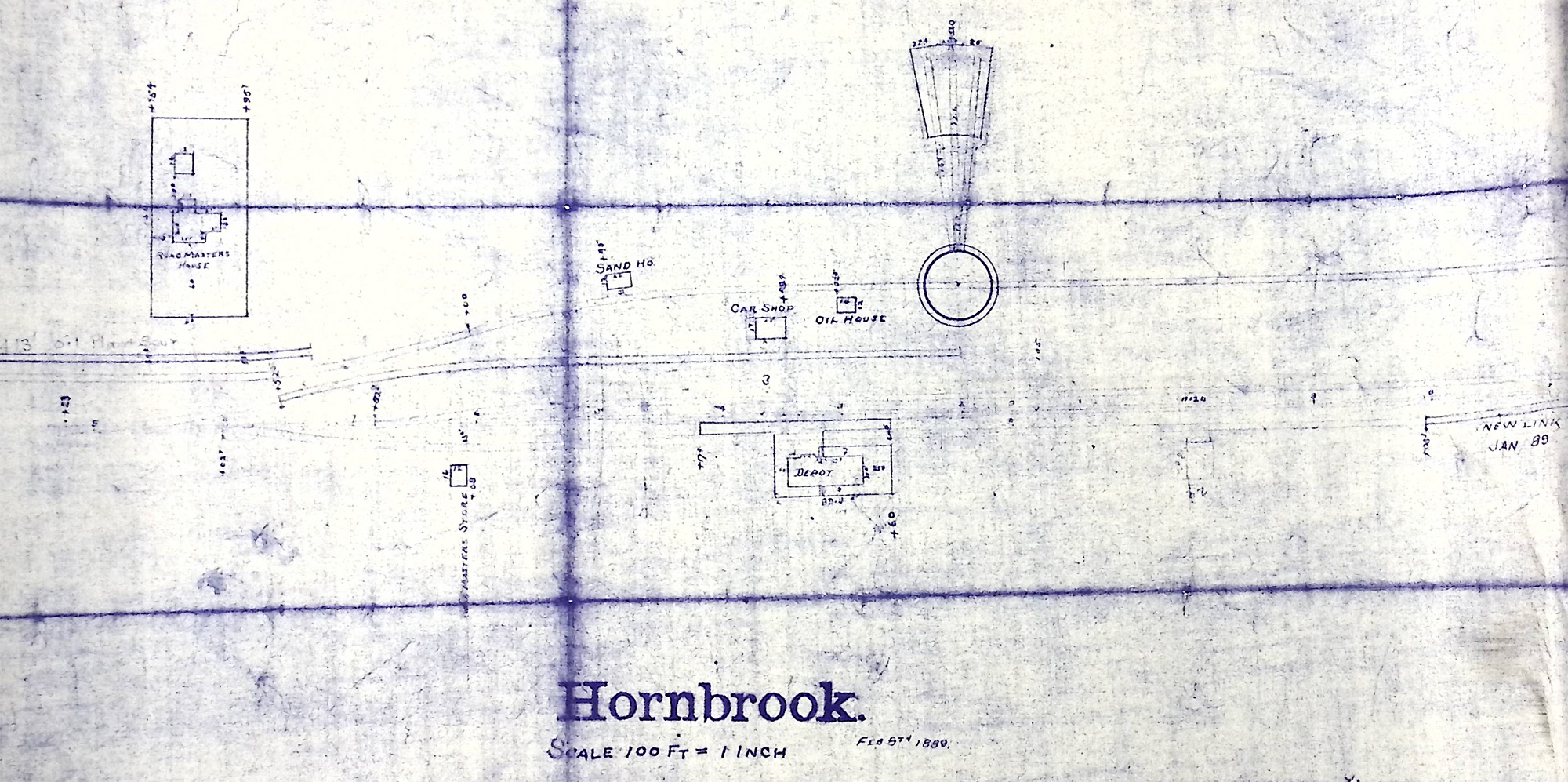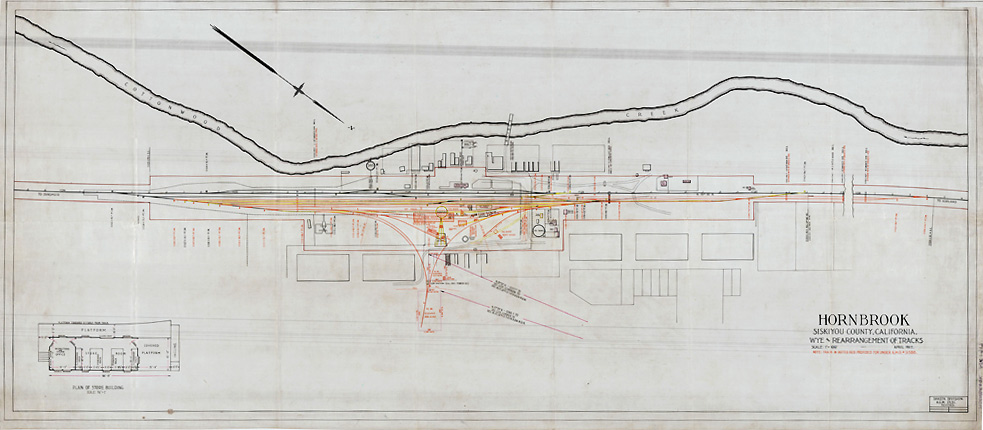|
A Triple Meet at Hornbrook |
SP Pages
A note to those viewing this page on their iPhones: Yep, the page is 1500 pixels wide - you have our express sympathy. |
||||
| Ahhh, to accompany that couple peering into the inner workings of SP 2nd #16's 4-6-0 road engine as it drifts northward to a stop past the depot lawn at Hornbrook, California, SP's helper station on the timetable west (geographical south) side of Siskiyou Summit. What a sight! The brakeman on helper #2547's footboard probably tipped his hat to them as he rode along into position for lining the main line switch once his train's turn came. Note that the helper fireman appears to be looking back for a stop signal to spot the train, which probably added its helper from the roundhouse lead on the west end, where things would have been less congested. On the main track between it and the depot, a section of #14 appears to be all set to pull, with the pop valve already blowing steam on what looks to be its MK-2 2-8-2 road engine. The section number is not visible, so it may have been 2nd #14, or maybe even the first section, which had fallen down on its schedule. |
Last addition: 9-19-25
correspondence: wx4org@yahoo.com |
||||
|
But wait, there's more! At left is T-28 #2341 receiving a bit of attention while it sits awaiting for the depot to clear. It may be 1st #13 or a following section's loco, which likely will receive a helper for the short slog southward up the hill to Snowdon. The northbound trains have considerably more work cut out for them, on the other hand, for immediately ahead of them lies the steep climb up Bailey Hill, with only a brief respite while crossing the border at Hilt, where they will begin staking their way up the stiff grade to Siskiyou Summit.(Although the published ruling grade on the south side of the summit was in the neighborhood of 3.6%, a local section forman once told me that the actual grade in one spot - on Bailey Hill in the vicinity of the I-5 crossing - was actually 4%. Any wonder the line was chosen to conduct Westinghouse AB-type air brake tests shortly after World War I?)
The scene was only on the tip of things, one would guess, given that it involved one or more trailing sections. The lead sections of these trains were scheduled to depart Hornbrook within 10 minutes of each other - opposing #13 and #16 simultaneously at 2:47 pm, with #14 departing 10 minutes earlier. The latter train actually left Oakland a full two hours behind #14, but it had traveled "Via Willows" on the West Valley Line, while #16 took the lengthier route through Sacramento. If all went as planned, #14 would have beat #16 by eight minutes into Tehama, where the two routes converged. Thus, the triple meet that we see here may have been a repeat of a similar event of earlier in the afternoon. Judging by the leaves on the trees near the depot, the bicycle tire ruts through the mud in the foreground and the apparently green in the background, this wondrous event must have occured on a spring day considerably later in the afternoon than the first sections' scheduled times. When we contemplate SP big time mountain railroading, Donner and Tehachapi always seem to eclipse Siskiyous Summit in our thoughts, perhaps because traffic has been, at best, marginal for so long. But when we do remember the Siskiyou Line, it always seems to be in terms of 2-10-2's pounding out of Ashland and the De Autremont brothers robbery at tunnel 13. Despite once being a rip-roaring railroad town that hosted an enormous amount of traffic, Hornbrook tends to be overlooked, no doubt due to its remote and uninspiring environs. But when you have daily events such as this (nevermind otherwise watching freight crews put together eight engine freight trains - see box at right) who needs scenery? |
|
|||
|
|||||
|
The Hornbrook That Never Was
Hornbrook's engine facilities clearly were inadequate to the task before World War I, causing SP to contemplate a major revision, even though the Cascade Cutoff was on the radar. This plan dated April, 1917 was rejected Eventually, a smarter solution prevailed: a wye located towards the right end of the map. - Shasta Archives |
|||||
